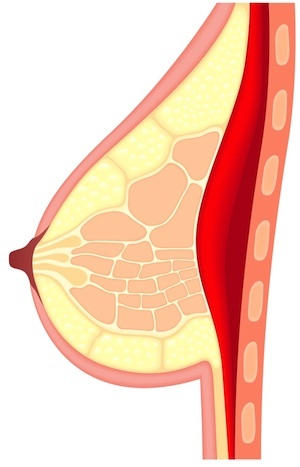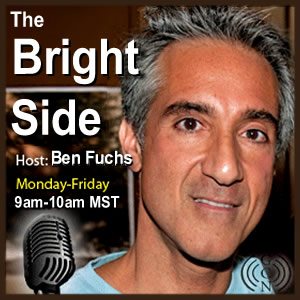With Thanksgiving days away, U.S. turkey growers are probably relieved that no arsenic, salmonella or cruelty stories have surfaced like they have
other years. But that doesn't mean the turkey on your holiday table is exactly wholesome. In fact, the chemicals, food additives and extreme production methods used to deliver the nation's plump, affordable turkeys just in time for Thanksgiving are enough to make you lose your appetite.
Resistant Salmonella and Other Superbugs
Two years ago, huge recalls of salmonella-contaminated ground turkey from
Cargill and
Jennie-O/Hormel sickened many, and one person died. While the food giants say they have cleaned up their acts, that's not what Consumer Reports found in March. Five percent of 257 samples of raw ground turkey that was bought at grocery stores around the country and tested harbored salmonella,
67 percent of which was resistant to more than one antibiotic. The government itself admitted that
81 percent of ground turkey it tested is contaminated with antibiotic-resistant bacteria. The superbugs result from the routine use of human antibiotics on commercial U.S. farms so operators can grow the animals faster and with less feed.
Seventy percent of the farm antibiotics are not for sick animals but to maximize profits and prevent infections.
Antibiotics
The U.S. turkey industry doesn't try to hide the stew of antibiotics it depends on for cheap turkeys -- it brags about them. "The increased costs to raise turkeys without antibiotics is real," said the National Turkey Federation's Michael Rybolt at
Capitol Hill antibiotics hearings in 2008. "Today at retail outlets here in the D.C. market, a conventionally-raised turkey costs $1.29 per pound. A similar whole turkey that was produced without antibiotics costs $2.29 per pound. With the average consumer purchasing a 15-pound whole turkey, that would mean there would be $15 tacked on to their grocery bill." Antibiotics are also green. Without them, more land would be needed to grow crops because the birds would eat more -- requiring 175,550 more tons of feed and causing "an increase in manure," said Rybolt. More land would also be required from the "decrease in density" because the birds couldn't be squeezed together the way they are now.
Clostridium difficile or "C Diff"
Have you ever heard of C. difficile? If not, you're lucky. It is an intestinal bacteria that it increasingly antibiotic-resistant, consigning thousands of Americans in health care settings and the community to a life or chronic pain, diarrhea and expensive treatments. (C. Diff is why "fecal transplants" are in the news these days. They are thought to replenish intestinal bacteria.) Glenn Songer, Ph.D., of Iowa State University College of Veterinary Medicine in Ames, says
40 percent of beef, pork and turkey products tested had the C. diff strains found in humans, raising the possibility of a food-borne source for human illnesses. C. Diff "has been isolated from retail pork, turkey and beef products and reported associated with human illness," says an February article in the
Journal of Food Protection. It was found in 44 percent of U.S. turkey products tested, says
Food Poison Journal.
Human Drugs... and Drinks
This month the
Associated Press reported that some U.S. turkeys are being fed beer to make them "fatter, more flavorful and juicier." After drinking the alcohol, one bird "appeared rather dazed, with eyes narrowed to slits and beer dribbling out of its beak," reported AP. Imbibing birds may sound innocuous or funny, but other human fare turkeys are given is not as amusing. Researchers at the Johns Hopkins Bloomberg School of Public Health and Arizona State University examined feather meal from U.S. chickens and turkeys and
found traces of the pain reliever acetaminophen (the active ingredient in Tylenol), the antihistamine diphenhydramine (the active ingredient in Benadryl) and the antidepressant fluoxetine (the active ingredient in Prozac). Turkey producers are even looking at giving turkeys
statins like Zocor.
Arsenic and Other Feed Additives
Like antibiotics, arsenic has been routinely used in turkey and other livestock feed to prevent disease, increase feed efficiency and promote growth. Last month, the FDA announced it was
rescinding three of four arsenic products that few knew were used in turkey production anyway. One drug, Nitarsone, is still in use, though, for the "first six weeks of a turkey's 20-week life span" says the National Turkey Federation, to treat a disease called histomoniasis. In fact, the
Code of Federal Regulations for turkey drugs reveals a long list of permitted drugs with long names that don't make you want to reach for the cranberry sauce. Halofuginone, given to turkeys to kill pathogens, "is toxic to fish and aquatic life" and "an irritant to eyes and skin," says the Federal Code. "Avoid contact with skin, eyes, or clothing" and "Keep out of lakes, ponds, and streams." Bon appetit.
Diseases From Fast Growth Production
Food risks in turkey don't just happen. They come from drugs and contaminants used by turkey growers to produce the maximum amount of fat turkeys with as little feed as possible in as little time as possible. The chemically-induced fast growth puts turkeys at risk for "sudden death from cardiac problems and
aortic rupture," (diagnosed by the presence of large clots of blood around the turkey's lungs) hypertensive angiopathy and
pulmonary edema. Growth drugs in turkeys may also "result in leg weakness or paralysis," says the Federal Code, a side effect that a turkey slaughterhouse worker at the House of Raeford, in Raeford, NC reported firsthand. Turkeys arrive with legs broken, dislocated and limp, he
told the press. Slowing the rapid growth by reducing the excessive energy and protein in the turkeys' diets strengthens their bones, say poultry scientists -- something most turkey growers don't want to hear or do.
More Diseases From Fast Growth Production
Turkeys do not just arrive at the slaughterhouse with broken legs. According to
veterinary journals, they are also likely to arrive with painful footpad lesions, swelling and dermatitis, deviated toes, arthritis, feathering picking and breast blisters. "Overcrowding, aggressive birds, poor-wet litter, decreased down time, a contaminated environment including feed and water, poor hygienic conditions, and contaminated vaccines and vaccine equipment" also produce the new emerging turkey diseases of
Clostridial dermatitis and cellulitis.
"The
disease is characterized by reddish to dark or greenish discoloration of the skin around the thighs, abdomen, keel, tail region, back, and wings," says another veterinary journal.
"The lesions can extend into the underlying muscles, and there can be gas bubbles under the skin which result in crepitation. Some cases present with dead birds having 'bubbly tail,' fluid-filled blisters associated with broken feather follicles around the base of the tail."
Pass the gravy.
Degraded Meat Quality From Fast Growth Production
"In response to high consumer demand, turkeys have been intensively selected for rapid growth rate and breast muscle mass and conformation," begins another disturbing article in a
veterinary journal. "The success in breeding selection has coincided with an increasing incidence of pale, soft and exudative (PSE) meat defect, especially in response to heat stress." (A similar defect called PSE, Pale, Soft, Exudative, is seen in mass produced pork which affects marketability.) Ractopamine, the asthma-like growth enhancer marketed as Topmax in turkey, also changes the quality of meat, according to its
manufacturer's own data. Turkey meat produced with ractopamine has "alterations" in muscle such as a "mononuclear cell infiltrate and myofiber degeneration,"
says drug information from Elanco, on which the drug was approved. There was "an increase in the incidence of cysts," and differences, some "significant," in the weight of organs like hearts, kidneys and livers. Yum.
Cruelty
If you think of Butterball as a trusted name that operates a help line for Thanksgiving Day cooks, then the turkey giant has succeeded at its PR job. Less than a year ago, workers at Butterball turkey operations in North Carolina were videotaped kicking and stomping birds, dragging them by their wings and necks and slamming them into tiny transport crates. It was a year after Butterball workers
were charged with criminal cruelty for the same actions! Who can say incorrigible? Butterball is "
taking steps to help ensure that all new and existing associates have a clear understanding of our animal well-being policies," said Butterball CEO Rod Brenneman after the first offenses. Maybe employees don't know they aren't supposed to kick, drag and bash birds. After the second offenses, Butterball launched a audacious radio campaign about its convenient holiday help line with no mention of the criminal abuse.
Twenty percent of U.S. turkeys on the Thanksgiving table come from Butterball, but it is hardly the only abuser. Shocking cruelty has also been documented at
Aviagen Turkeys in West Virginia and
House of Raeford in North Carolina.



















